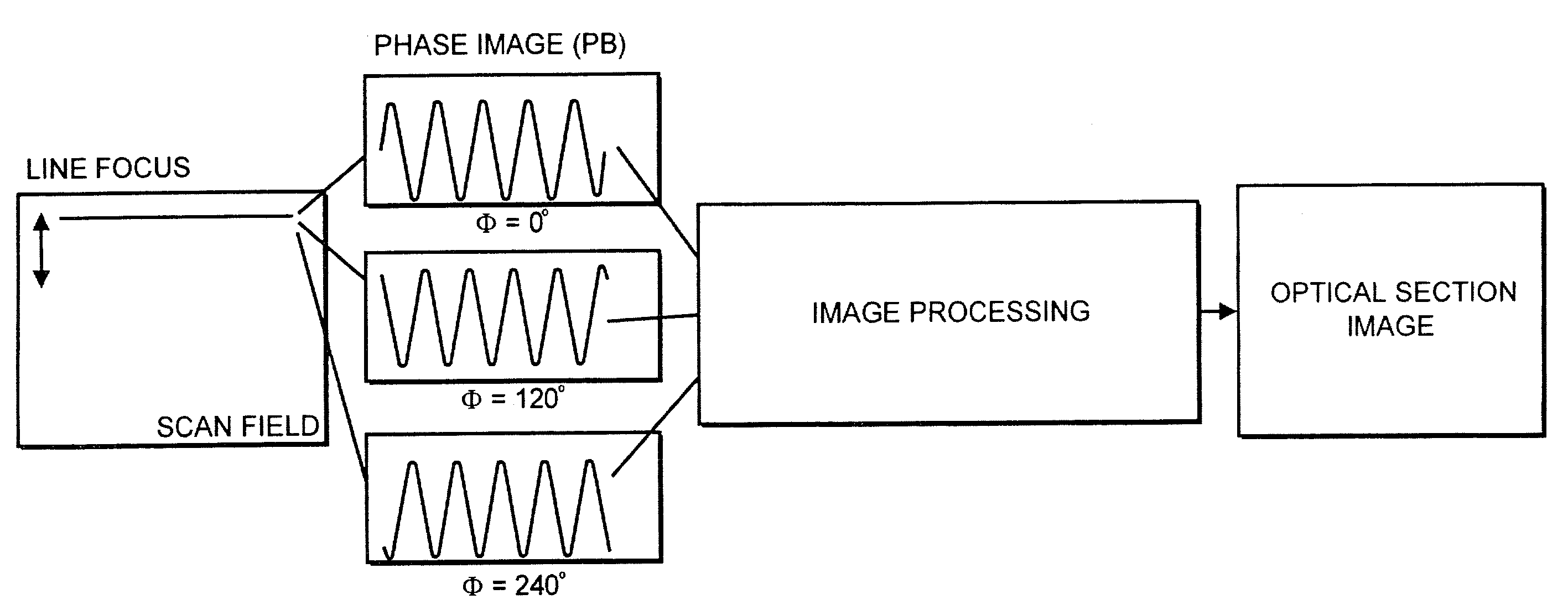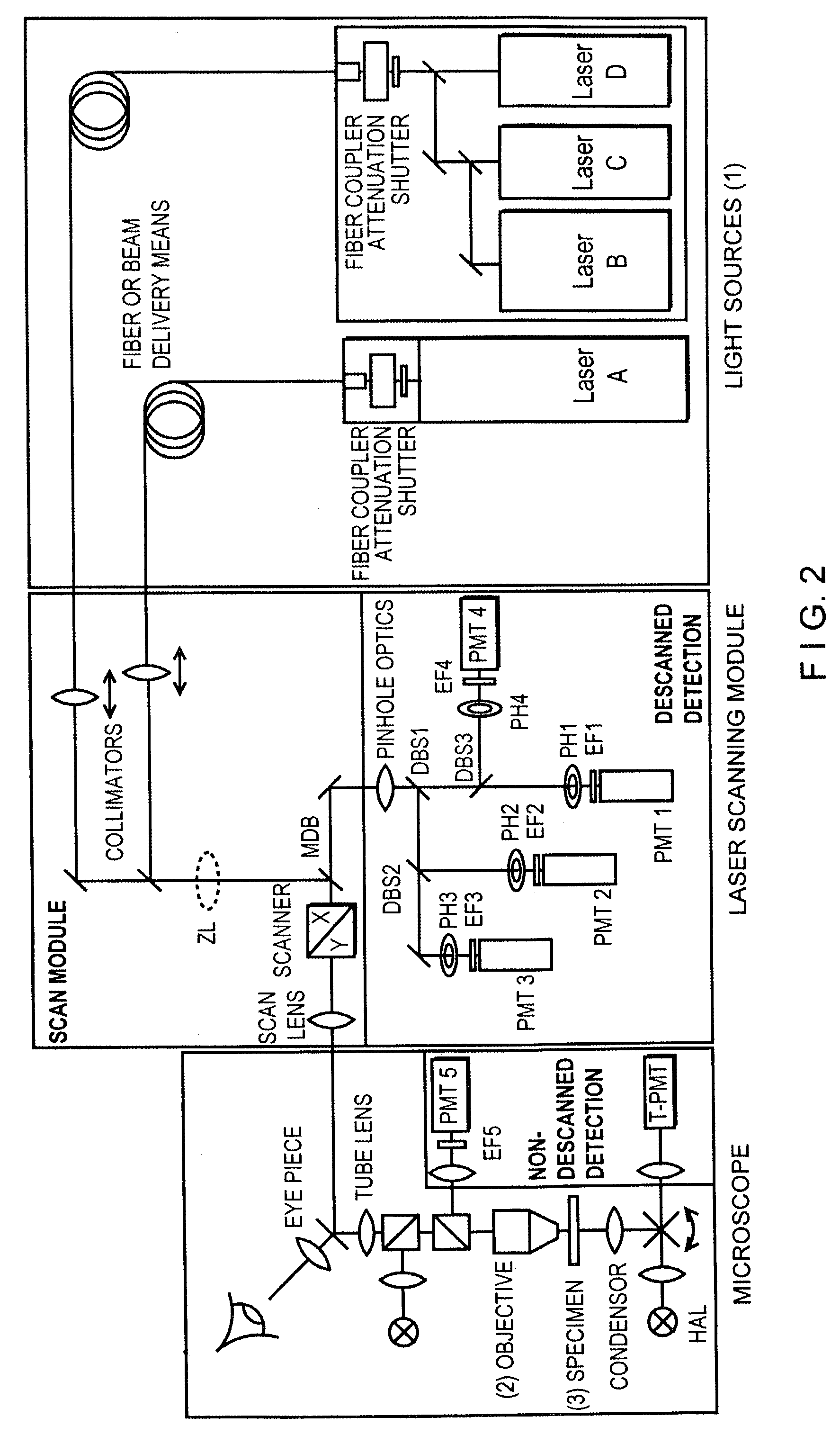Method and arrangement for the deep resolved optical recording of a sample
a deep resolution, optical recording technology, applied in the field of microscopy, can solve the problems of multiple detection devices, reduced depth resolution through the slit diaphragm, and increased difficulty in obtaining sample data, and achieve the effect of high optical resolution
- Summary
- Abstract
- Description
- Claims
- Application Information
AI Technical Summary
Benefits of technology
Problems solved by technology
Method used
Image
Examples
Embodiment Construction
[0059]The object of the method for increasing spatial detection resolution, preferably in a method displaying images in real time, is a line-shaped excitation and detection of the excitation radiation and / or excited fluorescence reflected, scattered and / or transmitted by a specimen. For this purpose, a line focus of the excitation radiation is generated in the specimen by means of suitable optics which are described more fully in the following. FIG. 4 shows a possible measurement flow chart. A scan field with the line focus is shown on the left-hand side. The line focus can be displaced along the arrow by suitable auxiliary means (scanner mirror in one direction). The increase in axial and lateral resolution is carried out by means of a structuring of the line focus. The structuring is carried out by superposing the scan line with a periodic structure which is generated, for example, by a sine grating in the beam path. With coherent illumination, a structure can also be generated in...
PUM
| Property | Measurement | Unit |
|---|---|---|
| thickness | aaaaa | aaaaa |
| edge length | aaaaa | aaaaa |
| angle | aaaaa | aaaaa |
Abstract
Description
Claims
Application Information
 Login to View More
Login to View More - R&D
- Intellectual Property
- Life Sciences
- Materials
- Tech Scout
- Unparalleled Data Quality
- Higher Quality Content
- 60% Fewer Hallucinations
Browse by: Latest US Patents, China's latest patents, Technical Efficacy Thesaurus, Application Domain, Technology Topic, Popular Technical Reports.
© 2025 PatSnap. All rights reserved.Legal|Privacy policy|Modern Slavery Act Transparency Statement|Sitemap|About US| Contact US: help@patsnap.com



